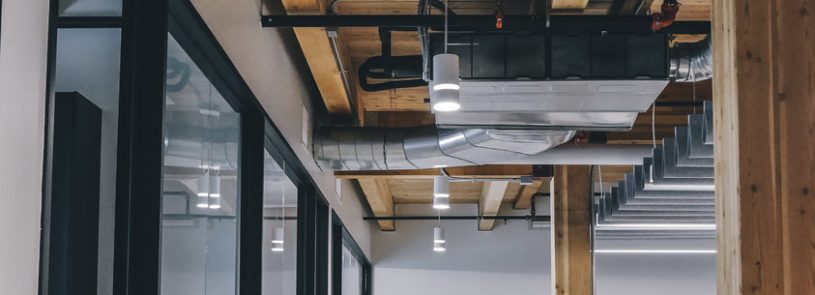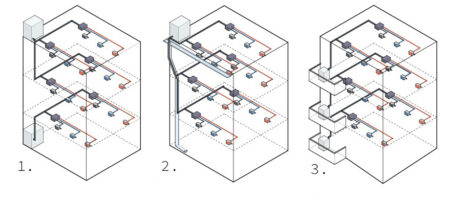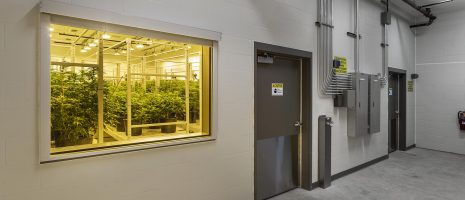Mass Timber 101: Code changes offer building owners much more flexibility

Second in a series based on the IMEG executive guide, “Mass Timber 101: A Guide to the Hottest Sustainable Building Material.”
By Heather Heidenreich
Cross-laminated timber (CLT) has become a popular building material across the U.S. due to its unique aesthetic, sustainable qualities, and potential cost savings. In response, the International Code Council (ICC) created an ad hoc committee in 2015 to reevaluate the use of wood in tall buildings. Up until that point, only historical data had been available for reference, leaving it up to city councils to decide on their own if their local codes should allow mass timber, and if so, at what parameters.
IMEG’s Chicago structural team was involved in the permitting process and building type approval for the first heavy timber (HT) project built in the City of Chicago in over 50 years: a new, 45,000-sf multi-use building in the historic Fulton Market District. From the outset, the city did not view glulam construction as equal to heavy timber construction (wood framing members with minimum dimensions and other restrictions to attain fire resistance) as outlined in the Chicago Building Code, even though the International Building Code (IBC) viewed them as the same. The IMEG team used exhibits and testimonials from Wood Council members to show how glulam is indeed the same as heavy timber and received approval from the city to build the project. The City of Chicago ultimately changed their building code provisions as a result.
Other cities are sure to follow, as mass timber was adopted into the 2021 IBC. The code defines the material as “structural elements of Type IV construction primarily of solid, built-up, panelized, or engineered wood products that meet minimum cross-section dimensions of Type IV construction.”
However, fire protection is a common concern with mass timber construction. Tall structures built with combustible materials would seemingly burn faster, but the thickness of mass timber elements means they char well and are slow to burn. The ICC’s ad hoc code committee recognized that mass timber in combination with concrete provides equal or superior fire protection without the use of gypsum. The committee subsequently divided the Type IV construction type into four sub-categories delegating how much can be used in buildings of varying heights:
- Section 602.4.1, Type IV-A. All mass timber elements are completely protected (encapsulated in drywall) to provide the required fire resistance rating. Maximum proposed potential – 18 story Residential / 18 story Business
- Section 602.4.2, Type IV-B. Allows exposed wood surfaces not to exceed 40% of the wall area. Exposed areas must be separated by a minimum of 15 feet. Concealed spaces, shafts and certain other spaces are still required to be fully protected by non-combustible materials. Maximum proposed potential – 12 story Residential / 12 story Business
- Section 602.4.3, Type IV-C. Exposed wood surfaces permitted to be similar to HT construction. Concealed spaces, shafts, etc., still required to be fully protected. Maximum proposed potential – 8 story Residential / 9 story Business
- Section 602.4.4, Type IV-HT. This is the same as the current Type IV construction with no fundamental changes. Maximum potential – 5 story Residential / 6 story Business
The code now allows much taller heights for Type IV-A, B, and C, with a sprinkler requirement for buildings taller than 85 feet. This substantial change now allows for 270 feet, nearly 18 stories, for Type IV-A construction. The allowable building areas increased with the code changes, which equates to almost three times the area for a sprinkled building. These changes give owners much more flexibility than ever before.
For more information, download a copy of the IMEG executive guide, “Mass Timber 101: A Guide to the Hottest Sustainable Building Material.”
Also in this series:
- Mass Timber: Each type offers unique benefits
- Environmental advantages of mass timber
- Mass Timber: How far will your dollar stretch?
- Is mass timber right for your project?
Related podcast: Mass timber is hot and getting hotter. Here’s why.












